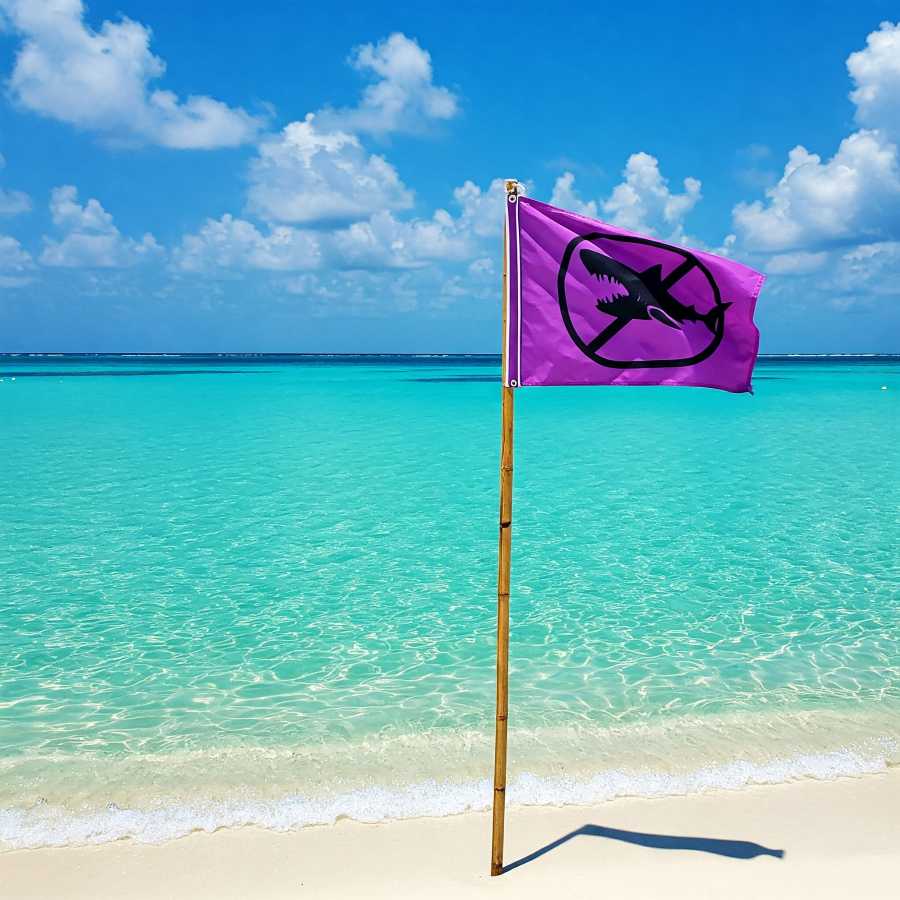Killer Snakes & Spiders Ready to Strike in Cancun
Despite its reputation as a paradise, Cancun and its surrounding natural areas harbor potentially deadly venomous snakes, spiders, and marine life that tourists should be aware of and take precautions against.

Cancel your zen! You came for the turquoise waters and endless margaritas, but Cancun's dark side is a crawling, slithering, stinging nightmare. Forget the cartels for a second, the real danger might be smaller, faster, and packing a punch far deadlier than a bad tequila shot. The concrete jungle of the Hotel Zone offers a veneer of safety, but step just a little off the beaten path, dip your toes in the wrong water, or stumble into a shadowy corner, and you could be facing a one-way ticket to agony, or worse!
While the postcards show paradise, the reality is Cancun is carved out of wild, untamed jungle and borders a vibrant, sometimes violent, ocean. And nature, folks, is metal. We're talking about creatures that can lay you low with a single bite or sting.
Slithering Death: Serpents of The Yucatan
Word on the ground, and from folks who actually live here, is that venomous snakes ain't just campfire stories. While a casual stroll down 5th Avenue is probably safe, venture into undeveloped areas, explore ruins, or even just have a room backing onto dense foliage, and you could cross paths with danger.
The heavy hitters you need to worry about?
- The Fer-de-lance (Bothrops asper): This is the undisputed king of nasty. Aggressive, with potent hemotoxic venom that can cause horrific tissue damage, internal bleeding, and in the worst cases, death. They're pit vipers, meaning they've got heat-seeking pits to find you even in the dark. Nasty.
- The Neotropical Rattlesnake (Crotalus durissus): You know the sound. That chilling rattle is a final warning before a strike. Their venom is a potent cocktail that can mess with your nerves and blood. Not a creature to get a selfie with.
- The Cantil (Agkistrodon bilineatus): A close cousin of the U.S. cottonmouth, these guys pack a wallop with venom that also causes tissue destruction. Found more in the northern Yucatan, but their range can overlap.
- Coral Snakes (Micrurus species): Beautiful, with their bright bands of red, yellow, and black, but don't be fooled. Their venom is a powerful neurotoxin that can cause respiratory failure. Remember the rhyme: "Red and yellow, kill a fellow." While bites are less common due to their less aggressive nature, a mistake could be fatal.
Locals say these encounters aren't daily occurrences in the heart of the tourist zone, but they ARE around. Construction pushes them out, and heavy rains can drive them to seek shelter. Be aware, watch your step, and for the love of all that's holy, do NOT try to handle any snake you see.
Eight-Legged Terror: Spiders Waiting in The Dark
While tarantulas are big and scary-looking, their bite is usually just painful, more bark than deadly bite for most humans. The real creeps you need to watch for are the silent assassins:
- Black Widow Spiders (Latrodectus species): Instantly recognizable by the red hourglass on their abdomen. Their neurotoxic venom can cause severe muscle cramps, abdominal pain that mimics appendicitis, and a whole world of hurt. While fatalities are rare with medical treatment, you'll wish you were dead. They like dark, quiet places – think معاكم storage sheds, woodpiles, or even that rarely-used corner of your balcony.
- Brown Recluse Spiders (Loxosceles species): These unassuming brown spiders have a necrotic venom that can cause the skin and tissue around the bite to die, leading to nasty, slow-healing ulcers. Look for a violin-shaped marking on their back. They are, as their name suggests, reclusive, but their bite can leave a lasting, ugly mark.
Again, these aren't exactly roaming the hotel lobbies, but in less manicured areas or older buildings, they can be present. Shake out your shoes if you leave them outside!
Ocean's Vengeance: Dangers Lurking Beneath the Waves
The sparkling Caribbean is inviting, but it's a wild ecosystem with its own set of dangers.
- Box Jellyfish (Chironex fleckeri and others): While the most infamous "deadly" box jellyfish are in the Indo-Pacific, related species with potent venom do exist in the Caribbean. Their sting is excruciatingly painful and can be life-threatening, causing paralysis and cardiac arrest. While rare to encounter near crowded tourist beaches, especially the deadliest ones, purple flags warning of dangerous marine life should be taken seriously.
- Stingrays: More commonly a source of a very painful, debilitating injury rather than death, stingrays can be found in the shallows, often buried in the sand. Shuffle your feet when entering the water to avoid stepping on one and incurring the wrath of their venomous tail spine.
- Lionfish: These invasive, beautiful fish have venomous spines that deliver a nasty sting, causing intense pain, swelling, and in rare cases, more severe reactions. They're becoming more common on reefs. Look, but don't touch!
- Bull Sharks: While not venomous or poisonous, no discussion of deadly threats in Cancun's waters is complete without mentioning bull sharks. While attacks are infrequent, Cancun's waters are known habitat for these powerful predators, particularly in the Nichupté Lagoon and at certain times of the year. Stay in designated swimming areas and be aware of your surroundings.
- Crocodiles: More of a brackish water and lagoon threat than the open ocean, American crocodiles inhabit the Nichupté Lagoon system that borders the Hotel Zone. Sightings near resorts do occur, as viral videos from late 2024 and early 2025 have shown. They are apex predators and incredibly dangerous. Do not swim in the lagoon, and be cautious near its edges.
Insect Infamy: Small Bites, Big Problems
Beyond the annoying mosquitoes (which can carry diseases like Dengue, a serious, potentially deadly threat in itself), a few smaller critters can pack a punch:
- Fire Ants: Step on a fire ant mound, and you'll quickly regret it. Their stings are painful and can cause an allergic reaction in some individuals. While not typically deadly, a severe reaction or multiple stings can be dangerous.
- Sand Fleas (Tunga penetrans): While the common "sand flea" bites are just itchy nuisances, a different species, the chigoe flea, found more in rural, underdeveloped areas, can burrow into the skin and cause serious infections if not properly treated. Less likely to be a deadly threat on a manicured resort beach, but worth being aware of if you're exploring more remote sandy areas.
Look, the vast majority of Cancun visitors have a fantastic, incident-free time. Encounters with these truly deadly creatures are relatively rare, especially if you stick to well-populated tourist areas and exercise basic caution.
However, pretending these threats don't exist is foolish. Be informed, be aware of your surroundings, and know what to do if the worst happens. Seek immediate medical attention for any suspected bite or sting from a potentially dangerous animal. Don't let a moment of carelessness turn your dream vacation into a real-life horror movie. Stay safe out there!




